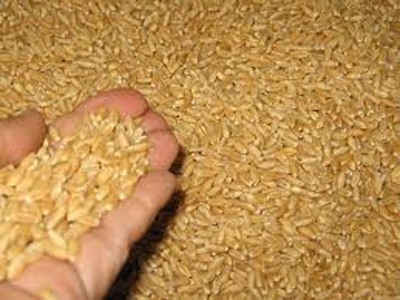Friday, 06 November 2015 01:19
 CHICAGO: US wheat eased off a four-week high on Thursday amid disappointing export sales and forecasts for more rain relief in dry U.S. growing belts, which offset concerns about adverse harvest weather in Australia and turned traders’ attention back toward large global supplies.
CHICAGO: US wheat eased off a four-week high on Thursday amid disappointing export sales and forecasts for more rain relief in dry U.S. growing belts, which offset concerns about adverse harvest weather in Australia and turned traders’ attention back toward large global supplies.
The firmer dollar also made U.S. wheat less attractive to those holding other currencies, as the greenback hit a three-month high against a basket of currencies.
Corn and soybeans ticked lower too, as pressure mounted among traders who anticipate increased government estimates for the ongoing U.S. harvest, to come out next week.
Chicago Board of Trade December corn closed down 1.6 percent at $ 3.74-1/2 on Thursday, while January soybeans fell 2.1 percent to $ 8.64 a bushel.
Meanwhile, CBOT wheat closed down 0.1 percent at $ 5.26-1/4 a bushel, after adding nearly 2 percent in the previous session when technical buying pushed prices up to $ 5.30-3/4 a bushel, the contract’s highest since Oct. 7.
But the news was more somber for wheat. USDA reported export sales of U.S. 2015/16 wheat in the week ended Oct. 29 at 84,600 tonnes, below a range of trade estimates for 300,000 to 500,000 tonnes and the lowest weekly total since Sept. 24.
Still, the higher wheat prices in recent weeks has some analysts baffled, with Chicago wheat trading at nearly a $ 1.50 per bushel premium over corn, said Joe Lardy, research manager at CHS Hedging.
“There is no fundamental reason we should be seeing a rally,” Lardy said, who thinks funds have been covering some of their very large short positions in wheat.
“It’s the money flow that’s moving this market and fueling this technical fire,” Lardy said.
Net U.S. soybean export sales also dropped last week to the lowest point in three months, according to USDA data.
Traders say they are concerned Chinese soybean imports are slowing going into the end of the year following several months of record-high imports, mostly from South America. The question now, they say, is whether China’s appetite for soybeans is sated from October orders, or whether demand may return soon.
Total current marketing-year U.S. wheat export sales are 17 percent behind the same point last year, USDA data showed, while soybean export sales are 22 percent behind a year ago and corn sales are behind by 32 percent.
Meanwhile, the market has seen steady pressure from analyst expectations for the U.S. Department of Agriculture (USDA) to raise its estimate of U.S. corn production and ending stocks in monthly supply/demand reports next week.




























